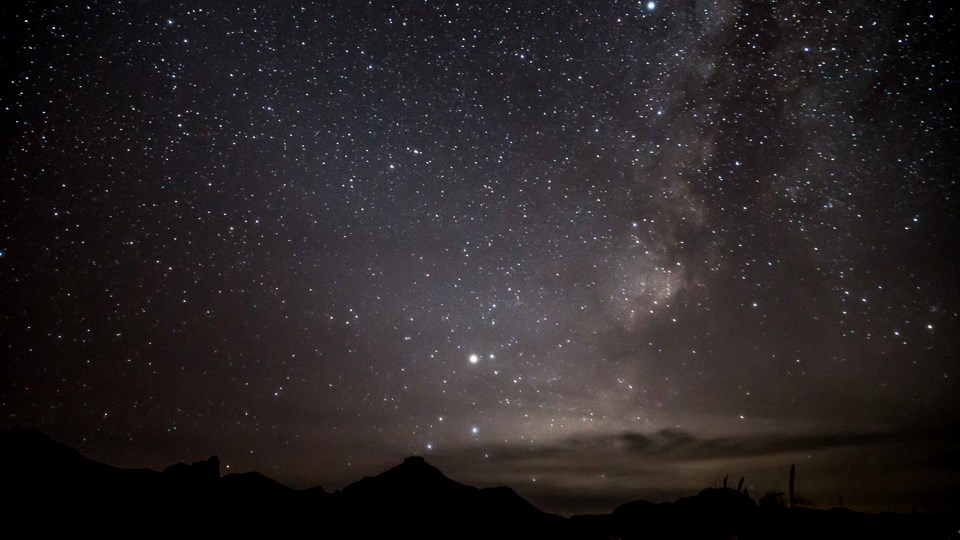
NPS photo Remember when you could see the Milky Way?Growing up in a small city in Colorado, seeing the Milky Way galaxy was a nightly experience. As time went on, the city got larger, more lights appeared, the Milky Way was more difficult to see. It took a while to realize that it was happening, but camping trips to the mountains made it obvious enough for my family to comment on it. While attending college, I began a summer career as a river guide and once again being far from the city made the dark night sky something I looked forward to experiencing. Then I was invited to guide on the Rio Grande in the Big Bend. This was a real eye opening experience for me since I had never seen so many stars as I did when I first arrived. I was awestruck. And hooked.Big Bend is known as one of the outstanding places in North America for star gazing. In fact, it has the least light pollution of any other National Park unit in the lower 48 states. One factor that makes this possible is simply the sparse human occupation of this region. The obvious impression one gets of wilderness in the Big Bend is the lack of visible lights indicating a house or a town. Most urban areas have such an abundance of light that very few stars are able to be seen. This can be a real surprise to visitors when they are outside in the Big Bend at night and see the Milky Way in its full glory for perhaps the first time in their life. Realistically, one can see approximately 2,000 stars on a clear night here, compared to perhaps a few hundred in a medium-sized city. The dark night sky has always been a visual impression in the Big Bend, with very few exceptions. When recorded history began in the Big Bend, a traveler at night might see a dim glow of a campfire or a lamp through a window in an isolated farm or ranch house. The light would perhaps give comfort knowing that shelter, a meal, or just other people were in the area. In the early 1900’s, the mining operations at Terlingua introduced modern lighting to a few of the larger buildings in the area. Seeing this at night would definitely indicate more than just an isolated dwelling. It could mean “civilization” depending on who was viewing the lights. The light could also symbolize progress towards civilizing the frontier or bringing the 20th century to the citizens of the isolated Big Bend region. Modern electric lights have changed the way people view and react to the night. Over the past hundred or so years, outdoor lighting has been increasing to the point where it’s always light out, even at night. Some lighting is for safety, advertising, or other societal reasons. It has, in effect, taken away the night. What ramifications does removing the dark night sky have on people? Does it make them feel safer? Has it changed what people do at night or how they view their surroundings? Ancient peoples studied the stars for thousands of years and used these observations for navigation, predicting or confirming seasonal changes, and religious purposes. Stories were woven about the meanings of the positions of different stars, answers to life problems were foretold in the movements of heavenly bodies. Past peoples used the stars because they were an integral part of life. That has changed in most of the world with the advent of the electric light. It seems now that our society has begun to realize the value of a dark night sky. To leave the city and the light gives park visitors and residents a glimpse into the past, where the night sky can be observed and studied, like people did for thousands of years. Recently, Big Bend National Park has begun the process of totally eliminating forms of light pollution to help visitors experience the wonders of a night sky free from modern intrusion. The installation of LED and shielded lighting is one of the steps that helps ensure that Big Bend National Park continues to be the best example of primeval night skies available today and for future generations. |
Last updated: May 24, 2020
